Auth0 SAML Configuration
The document provides a comprehensive guide for setting up Single Sign-On (SSO) login functionality within an organization's infrastructure. It outlines a series of steps to integrate SSO using Auth0 as the identity provider, facilitating seamless access to various applications and resources.
Beginning with navigating to the organization's Integrations screen and initiating the connection process, users are guided through the configuration steps, which include creating and setting up a SAML SSO Provider. The document also covers the necessary configurations within Auht0, such as creating an app integration and configuring SAML 2.0 settings.
Additionally, it offers guidance on advanced settings, including the importation of SAML configurations from Auth0. Through clear instructions and actionable steps, the document aims to empower users in implementing a robust SSO solution.
Appcircle supports Auth0 as OpenID or SAML provider.
Only Enterprise accounts support SSO.
Please be aware that, enabling SSO for APPCIRCLE LOGIN doesn't enable SSO for Testing Distribution and Enterprise App Store. They must be configured separately.
SSO Login
- To start, go to My Organization > Integrations screen and press the Connect button next to SSO Login under the Authentications section.
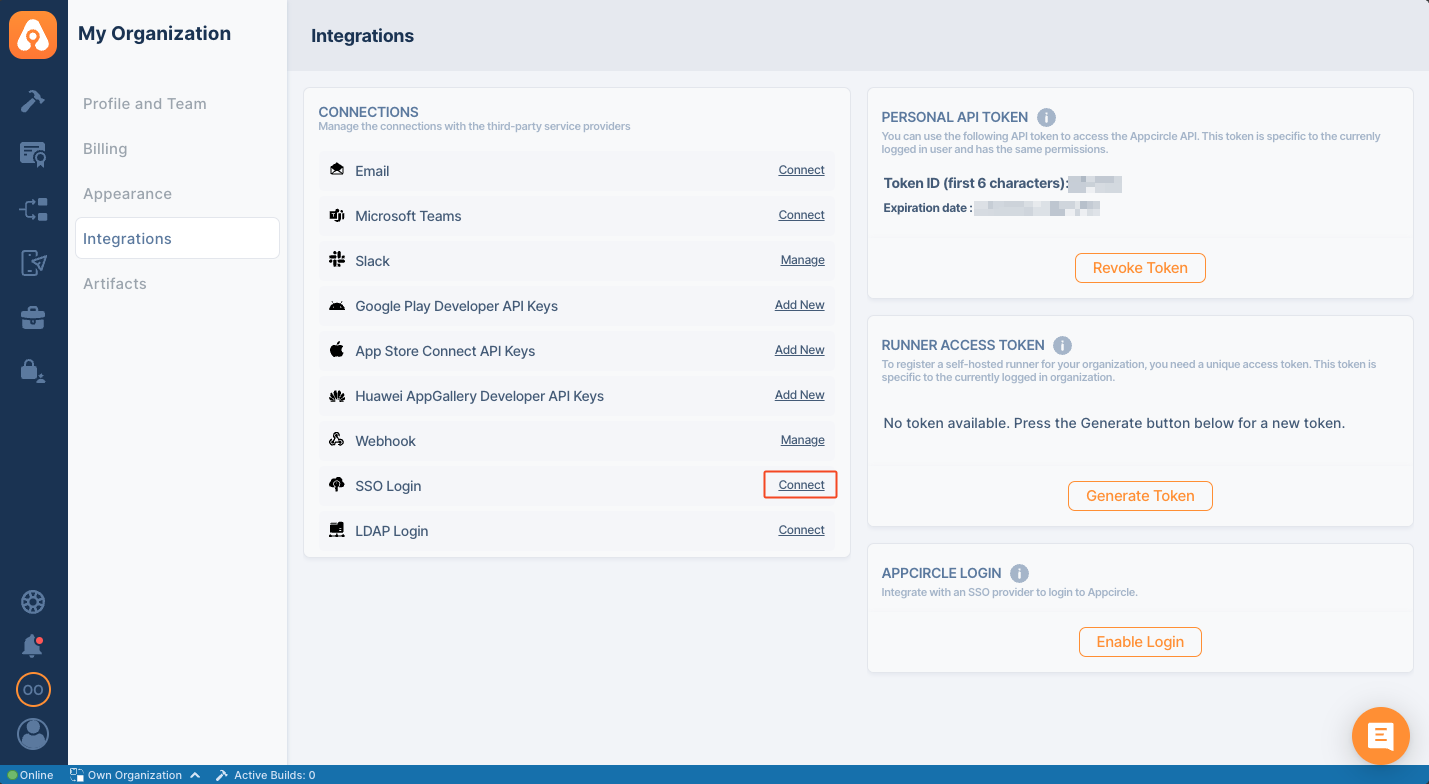
- Click Create button to create your SSO Login.
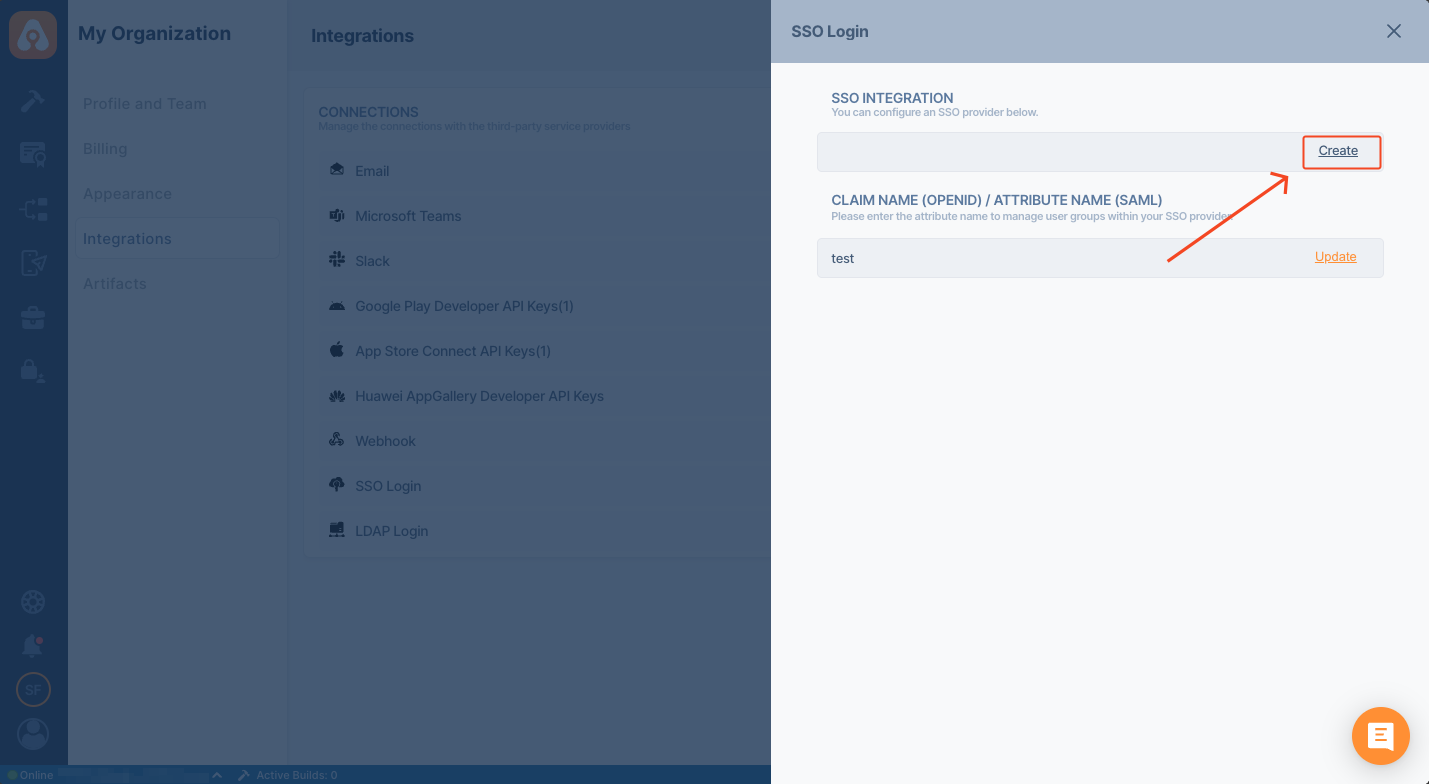
If you want to manage user groups within your SSO provider, you should set CLAIM NAME (OPENID) / ATTRIBUTE NAME (SAML) field.
- Select Setup SAML SSO Provider.
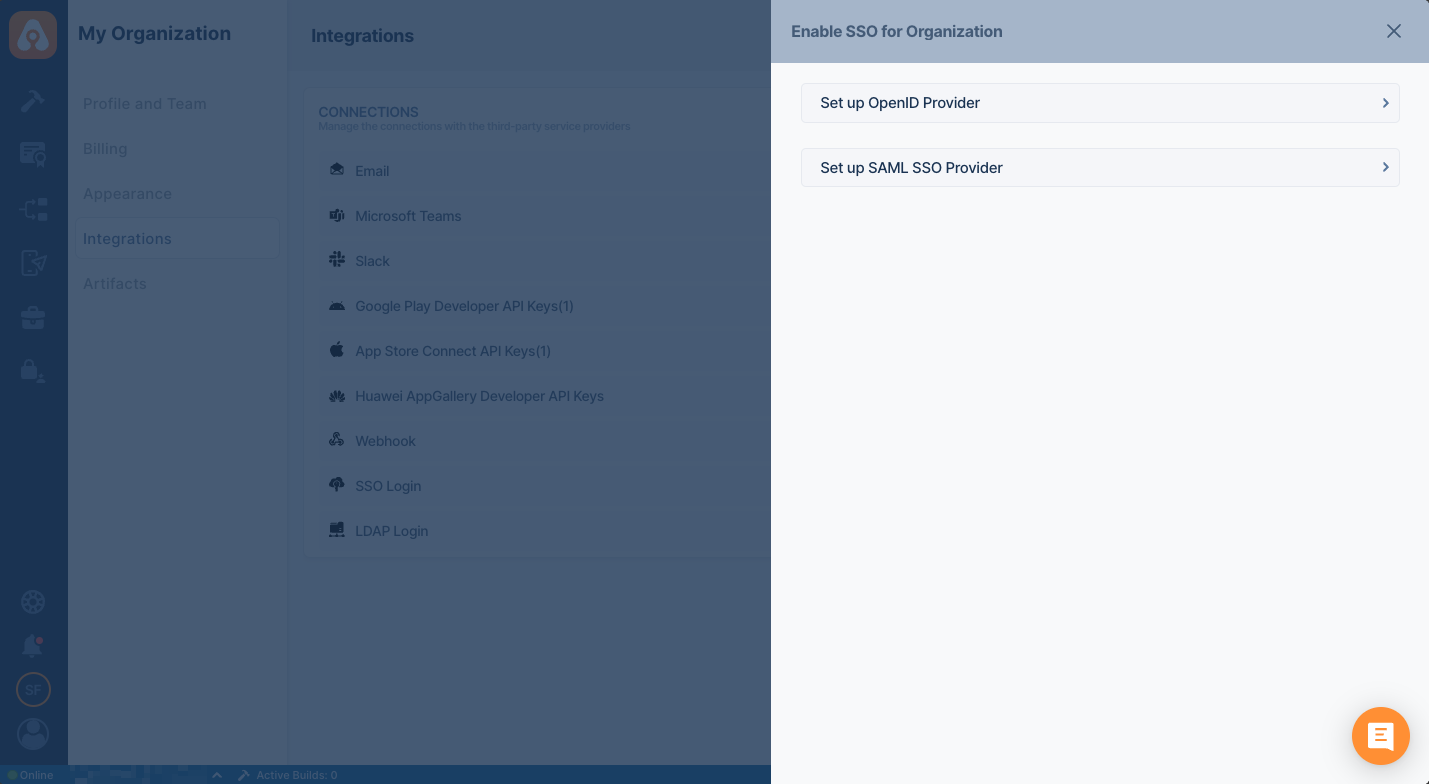
-
Pick an alias and display name for your organization. Please pick a short and rememberable alias.
-
This screen will auto-generate an URL for the Enterprise App Store and Testing Distribution.

Auht0 App Integration
- Login to your Auth0 account and navigate to Applications and then click Create Application.

- Select Regular Web Applications and give a name.
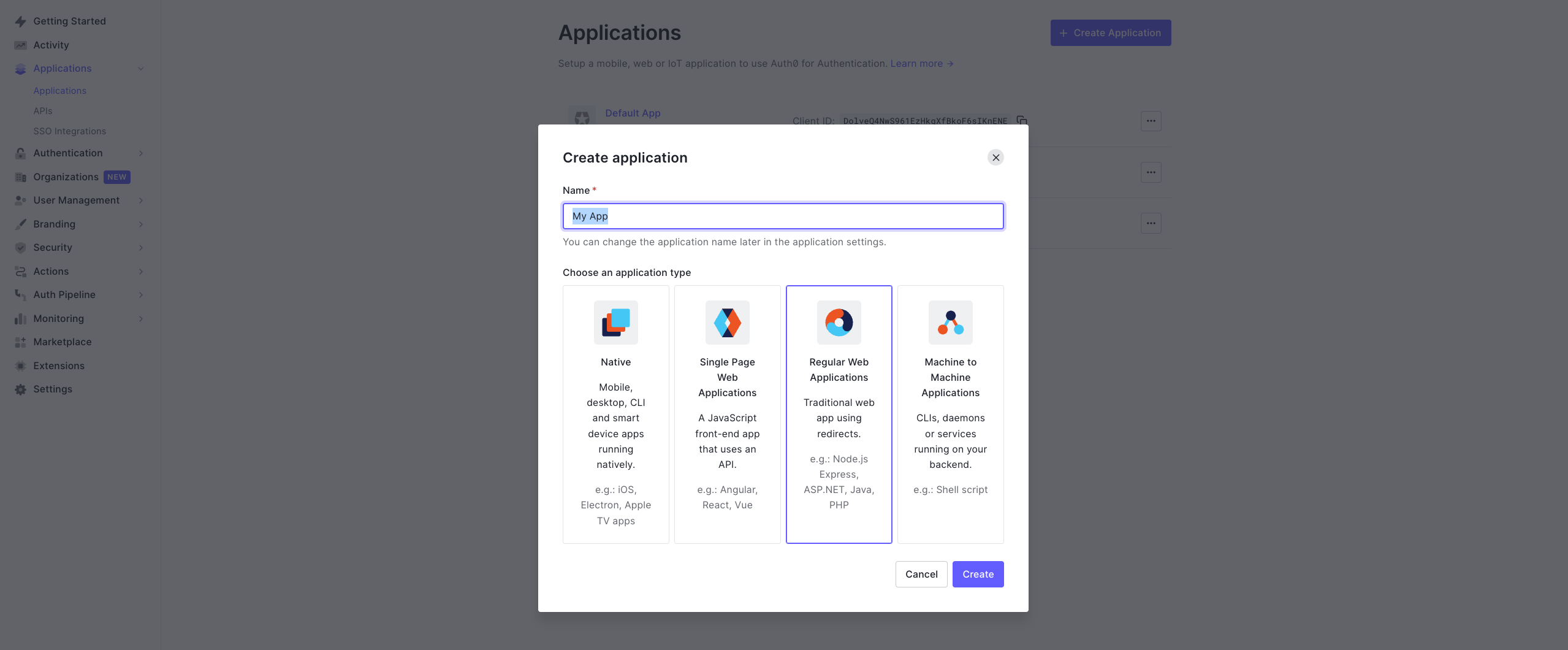
- Navigate to Addons of the app and enable the SAML option.
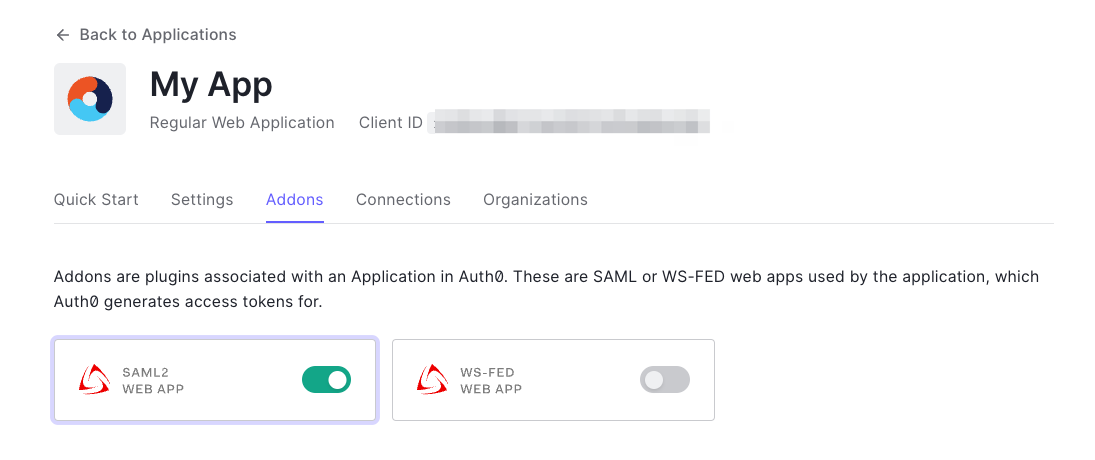
- Click the SAML button and change the settings. For the Callback URL write down the
Store Redirect URLyou have created earlier. For the settings, paste the below JSON.
{
"nameIdentifierFormat": "urn:oasis:names:tc:SAML:1.1:nameid-format:emailAddress",
"nameIdentifierProbes": [
"http://schemas.xmlsoap.org/ws/2005/05/identity/claims/emailaddress"
]
}
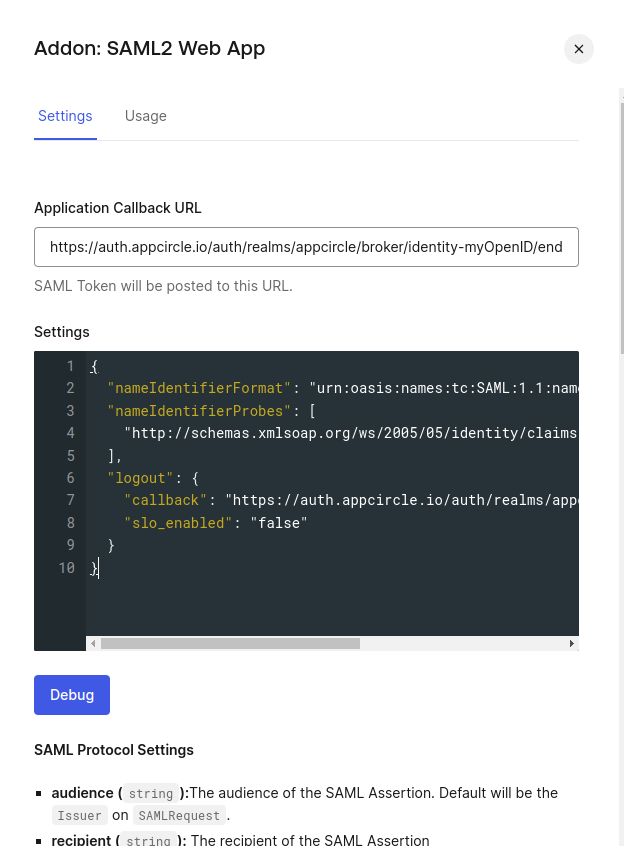
- Instead of writing all the settings of SAML, you can download the settings file from Auth0 and upload it. Navigate to the Usage and then click the Download button to download the XML file.
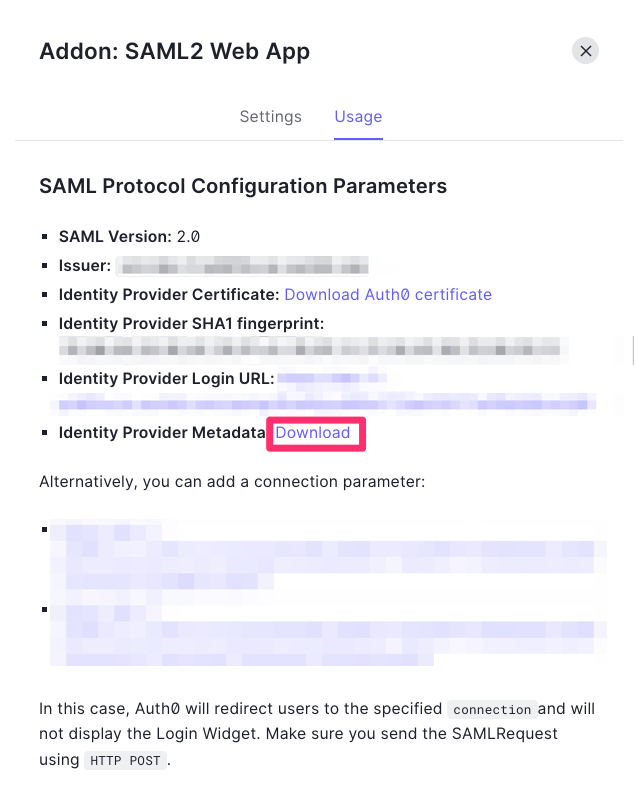
- Go back to Appcircle, upload this XML file by clicking the button under Import SAML Configuration.

- Check all the settings on this page and confirm that Redirect and SSO URLs are imported correctly. You can check if the X509 Certificate is imported correctly as well. If you want to enter multiple certificates you can separate them by using a comma between them. Please note that you need to remove any new lines or file headers from this edit box. This edit box only accepts a long base64 encoded string.
If you are a self-hosted Appcircle user, then you should change the domain of the Store and Distribute Redirect URL to your own domain.
You must use the same auth domain address with the store redirect URL.
For example your Store Redirect URL is https://auth.self.spacetech.com/auth/realms/store/broker/identity-spacetech/endpoint, Distribute Redirect URL is 
- Navigate to the Settings tab and go to the Application URIs section. Add
Distribute Redirect URLto the Allowed Callback URLs field.
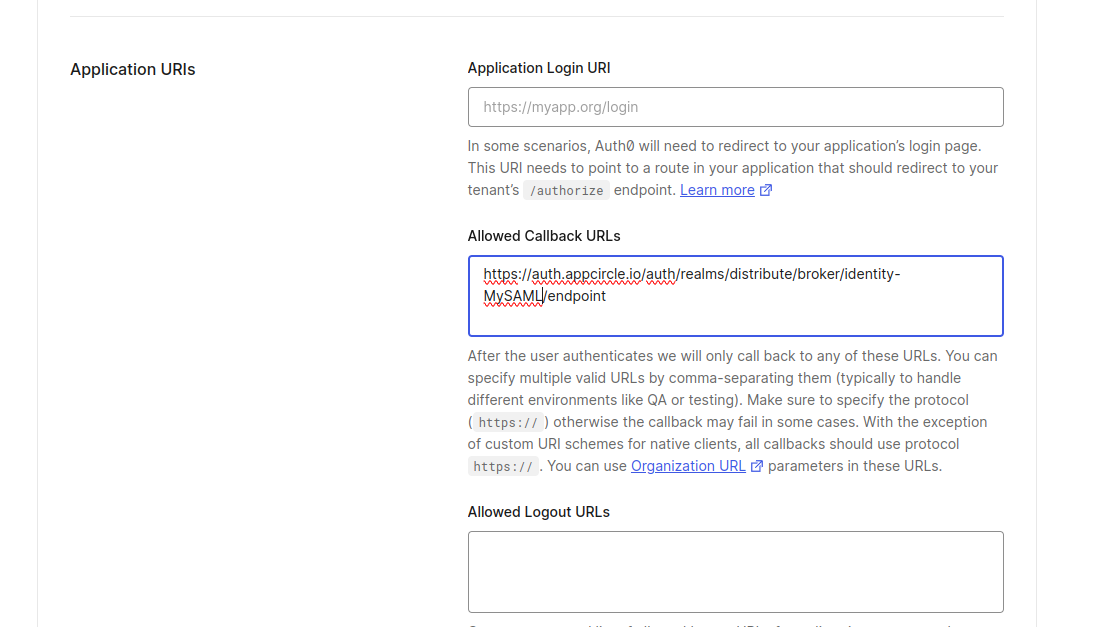
Auth0 Managing User Groups
Managing user groups within Auth0 provides users and organizations with several benefits. By organizing users into groups, administrators can efficiently manage access permissions for various applications and resources, saving time and effort. Administrators can synchronize Auth0 user groups with Appcircle, allowing for granular access control and group-based permissions. This integration enhances security, simplifies access management, and promotes collaboration within organizations utilizing the Appcircle platform.
- Login to your Auth0 account and navigate to the organization section. Then create organizations.
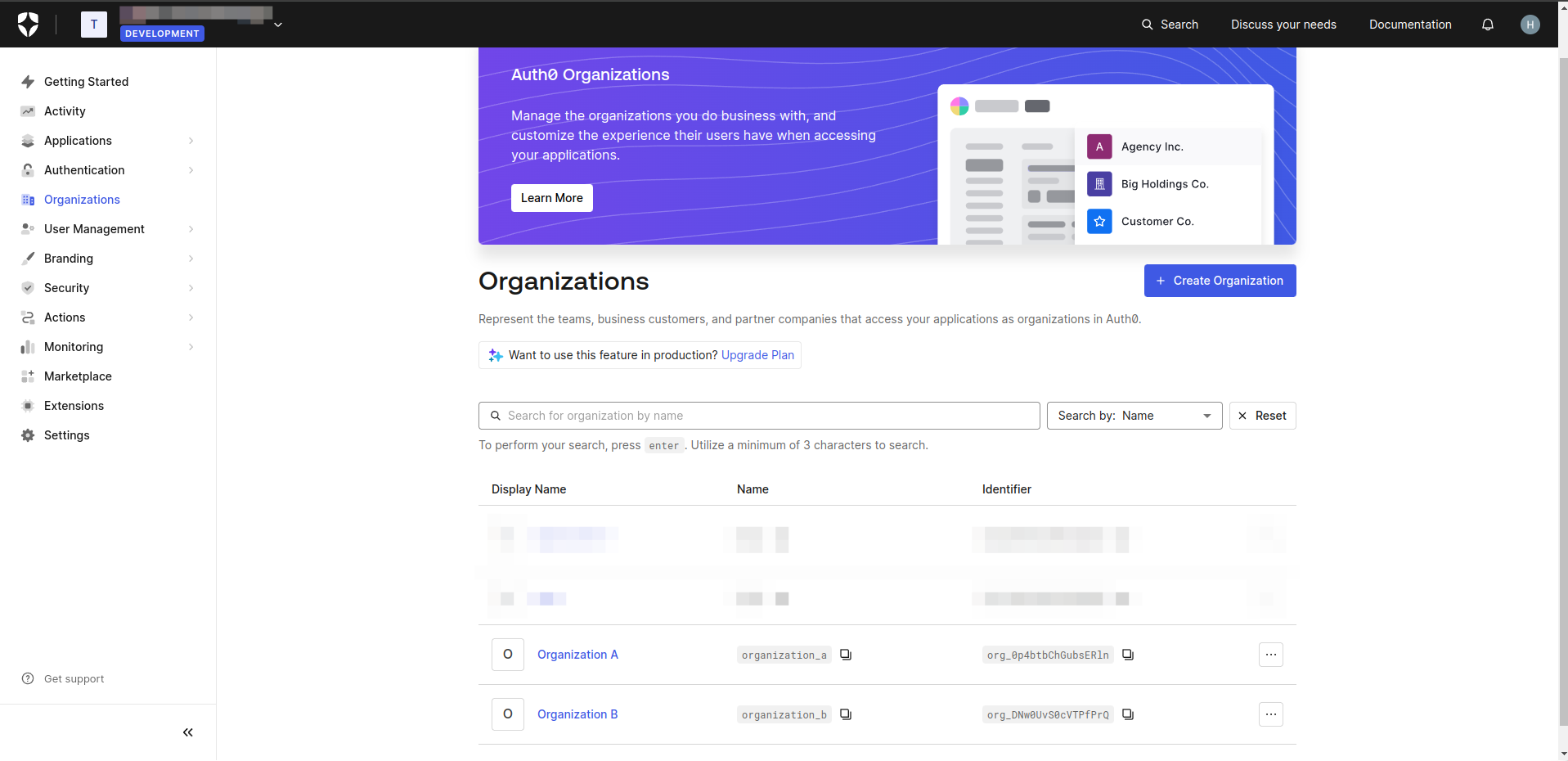
- Add users who will become members of your organization.
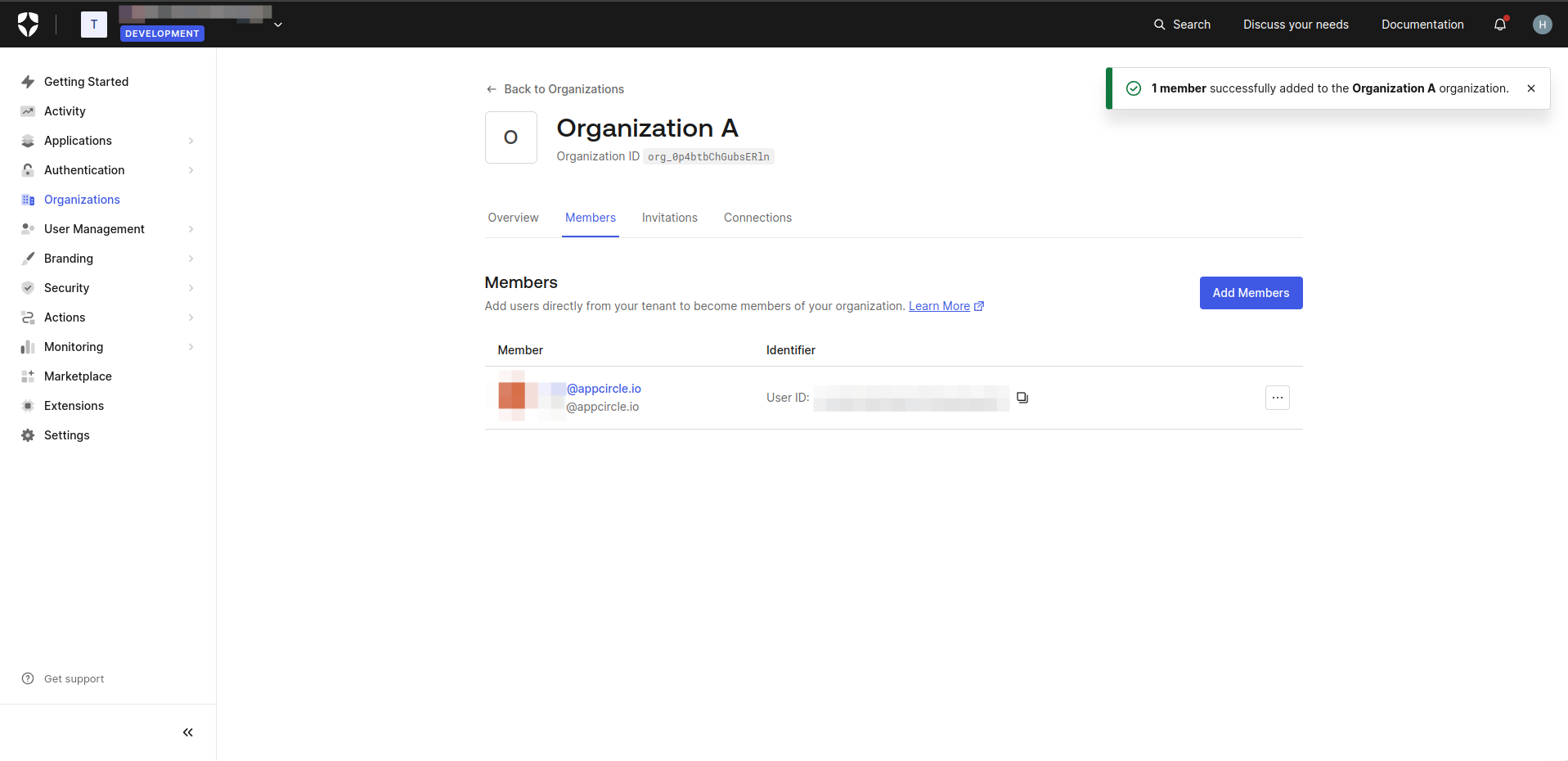
- Navigate to the "Connections" tab and enable Username-Password-Authentication connection for your organization.
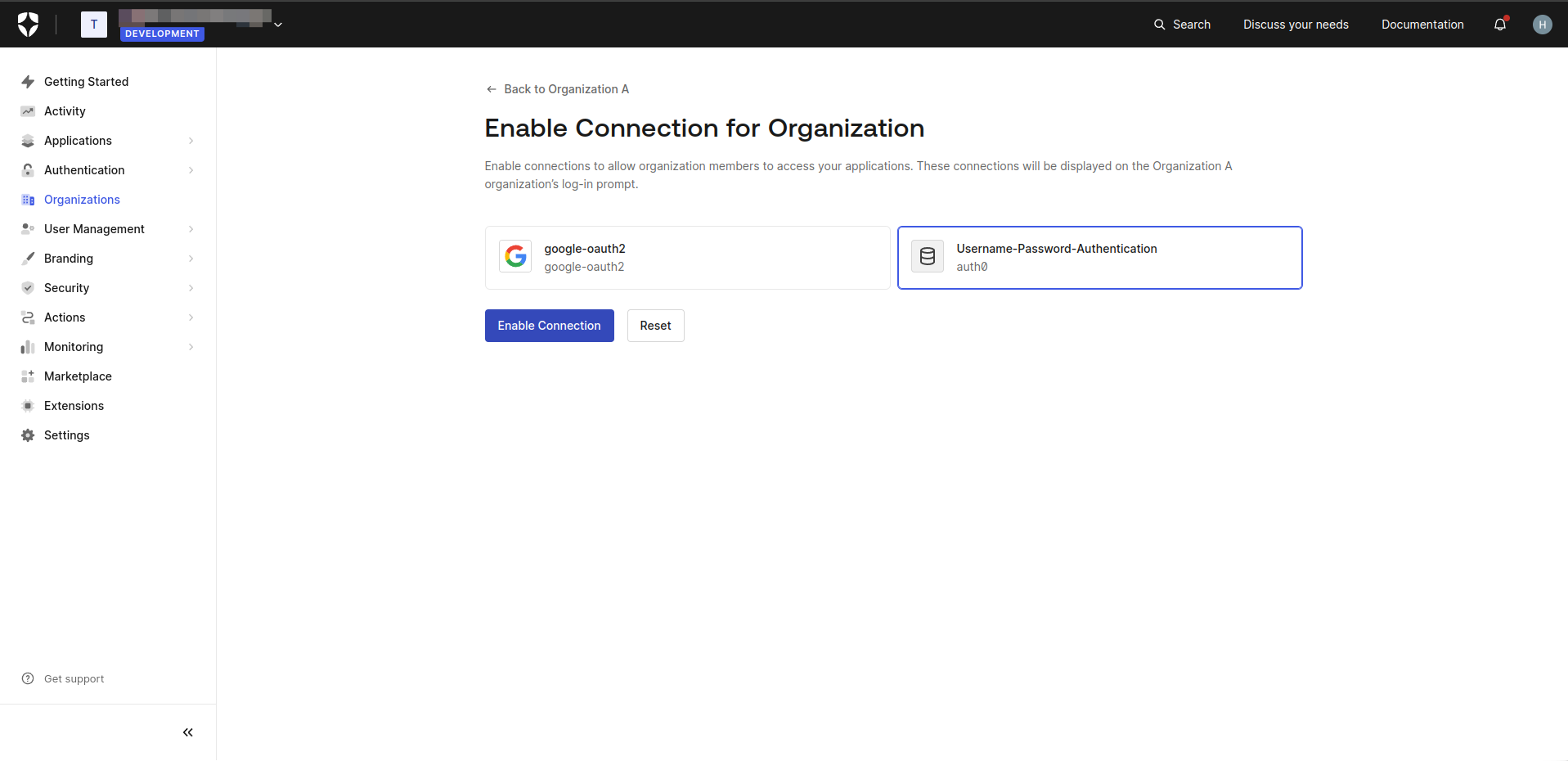
- Navigate to the "Applications" section. Select the relevant application, then go to the "Organizations" tab. Click on "Disable Grants Now".
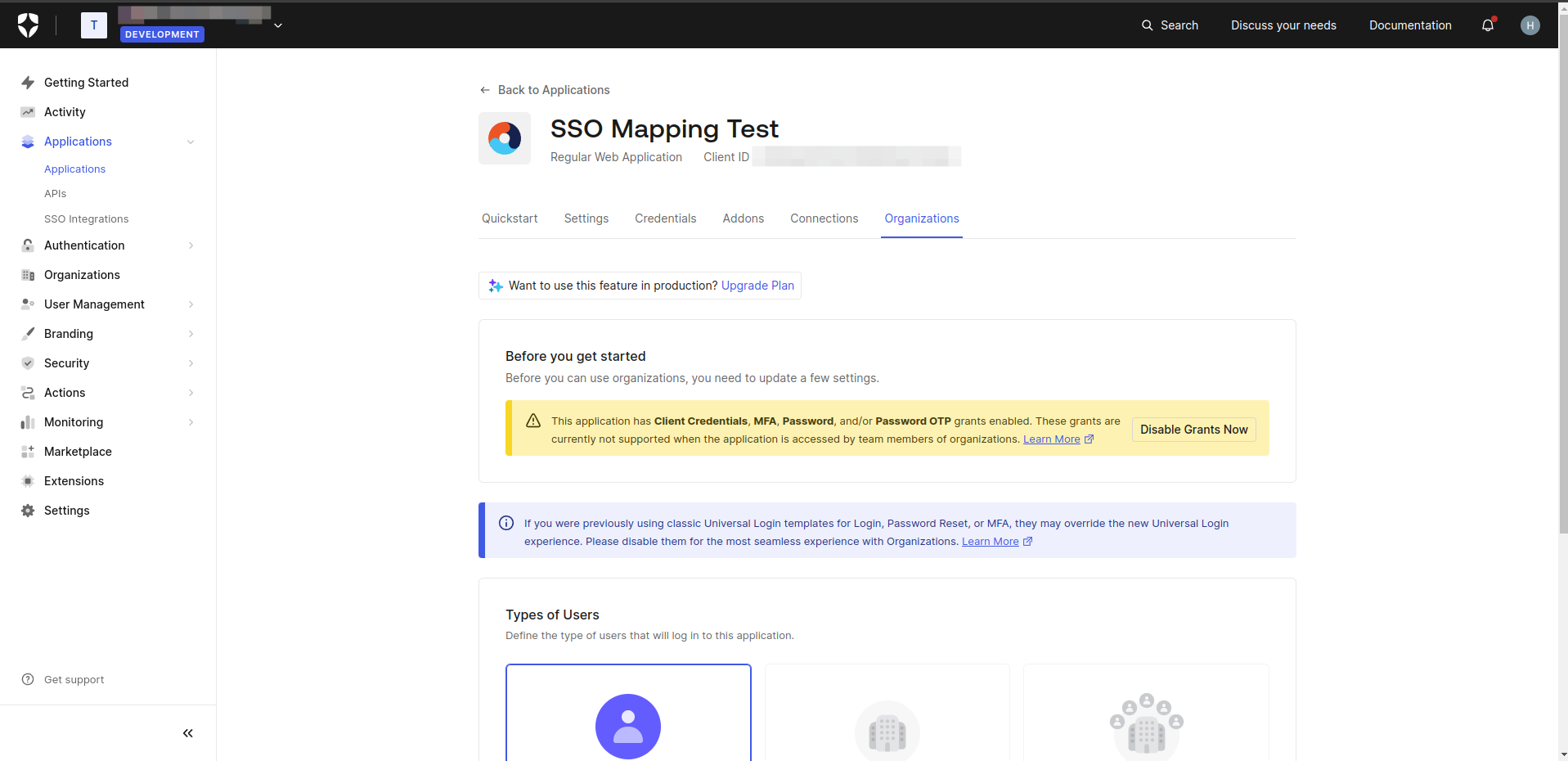
- Choose "Business Users" for the type of users and select "Prompt for Organization" for the login flow. Click on "Save Changes".
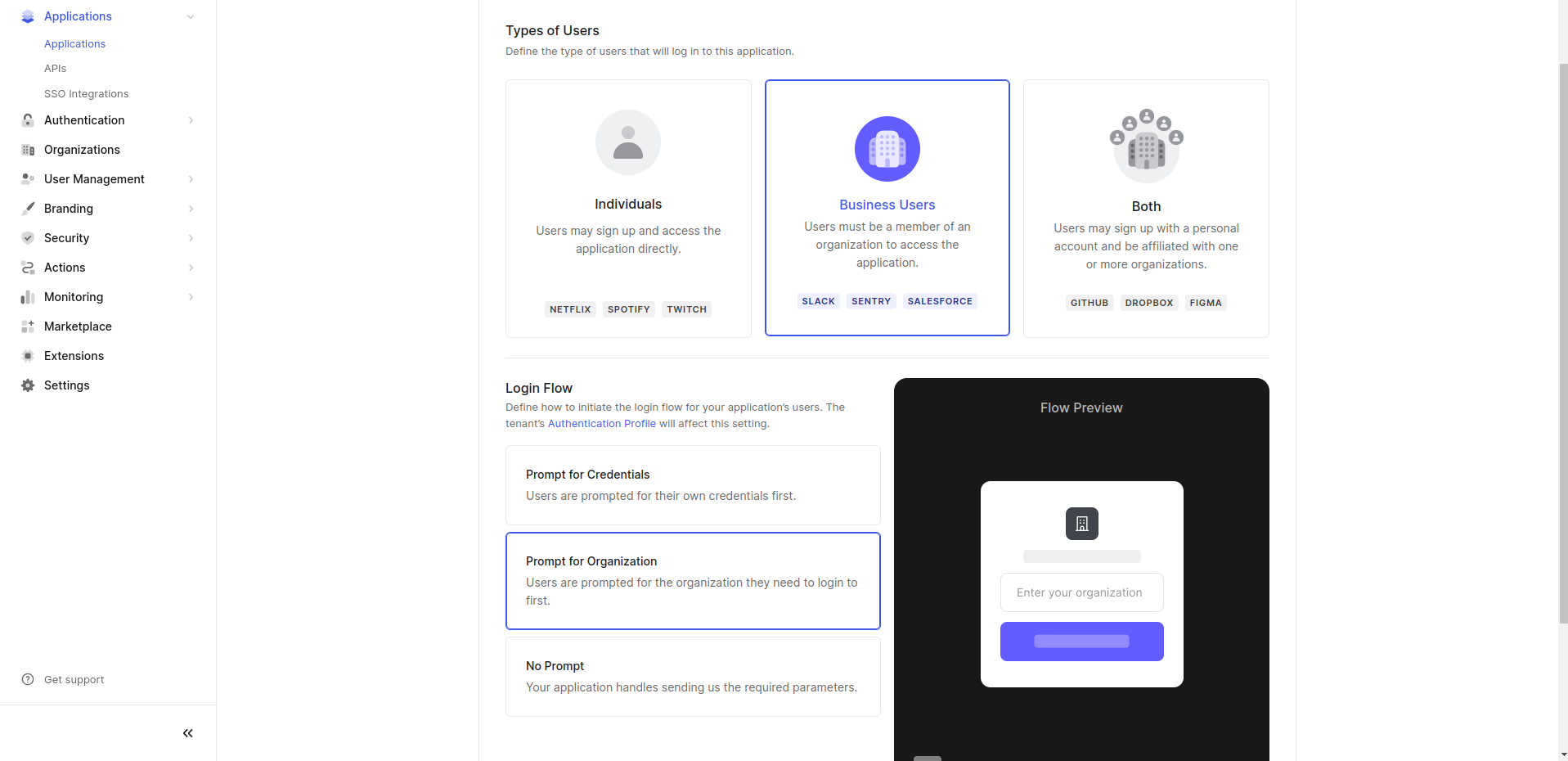
- Go back to Appcircle, go to My Organization > Integrations screen and press the Manage button next to SSO Login under the Authentications section.
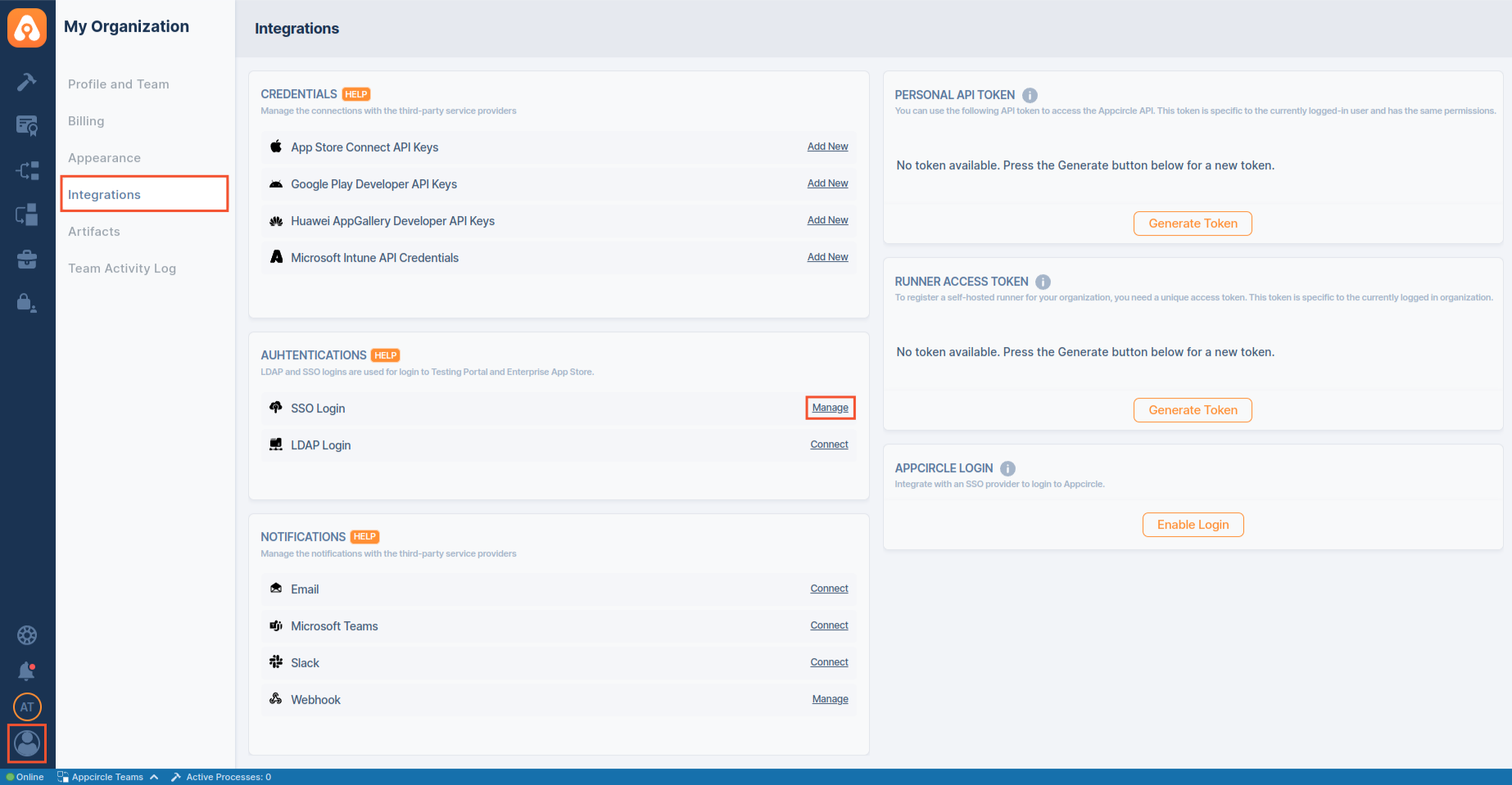
- Update the Claim Name as
http://schemas.auth0.com/org_id.
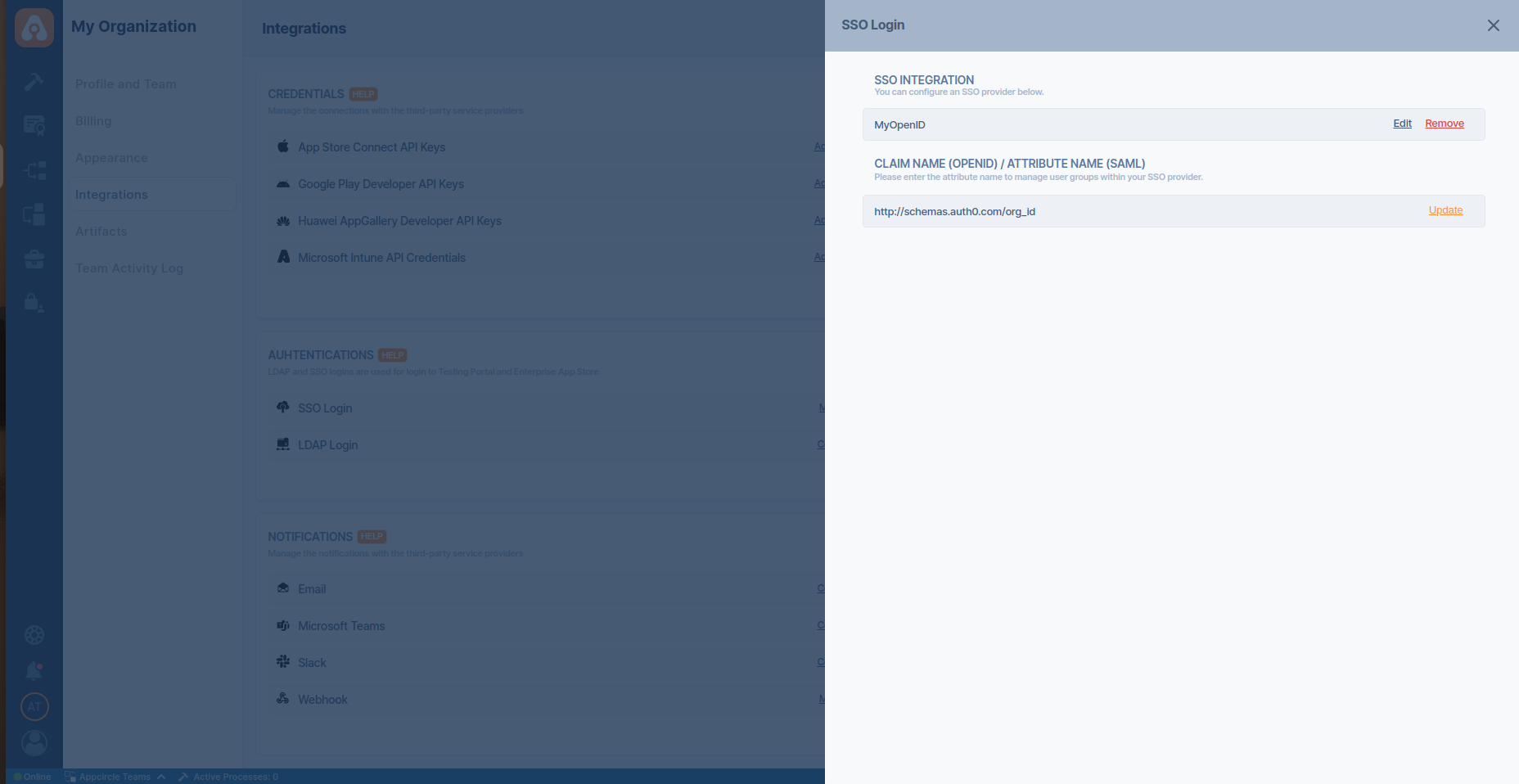
The http://schemas.auth0.com/org_id claim value is equal to the organization ID, not the organization name. Please refer the Use Organization Name documentation to change this behaviour.
Sample Scenario
For example there are two groups, one is developers and other one is users.
The beta channel on Enterprise App Store should be available for developers group and not for users group that has end-users.
The live channel should be available for both groups in this case.
Appcircle Integration Configuration
- Go back to Appcircle, upload this XML file by clicking the button under Import SAML Configuration

-
Check all the settings on this page and confirm that Redirect and SSO URLs are imported correctly. You can check if the X509 Certificate is imported correctly as well. If you want to enter multiple certificates you can separate them by using a comma between them. Please be aware that you need to remove any new lines or file headers from this edit box. This edit box only accepts a long base64 encoded string.
-
Hit
Savebutton and save the SAML configuration on Appcircle. -
To enable SSO Login for the Enterprise App Store, you should navigate to the Enterprise App Store -> Settings and then click on the
Activatebutton next to SSO Login
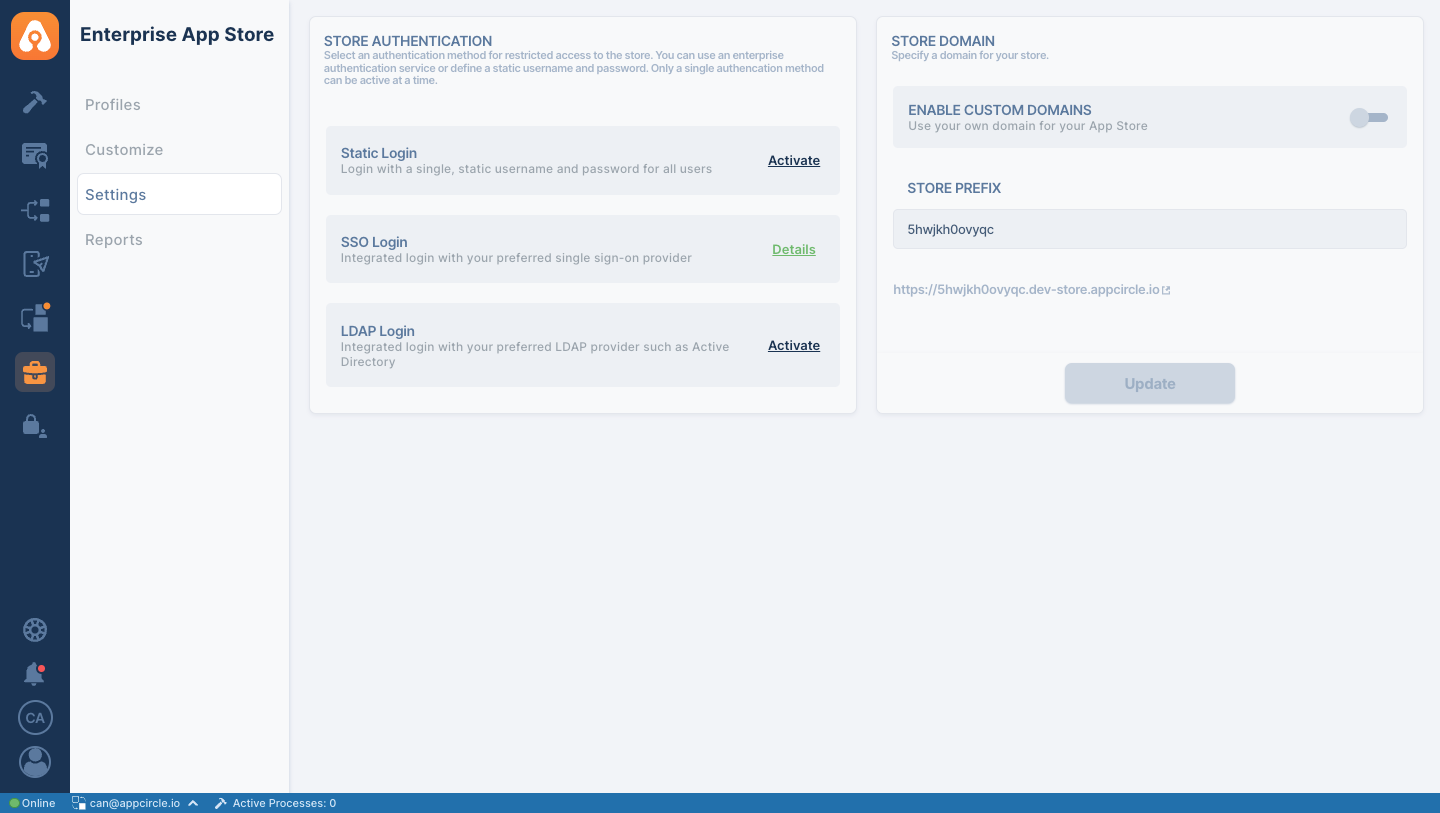
- To enable SSO login for the Testing Distribution, go to the Testing Distribution module and select related profile
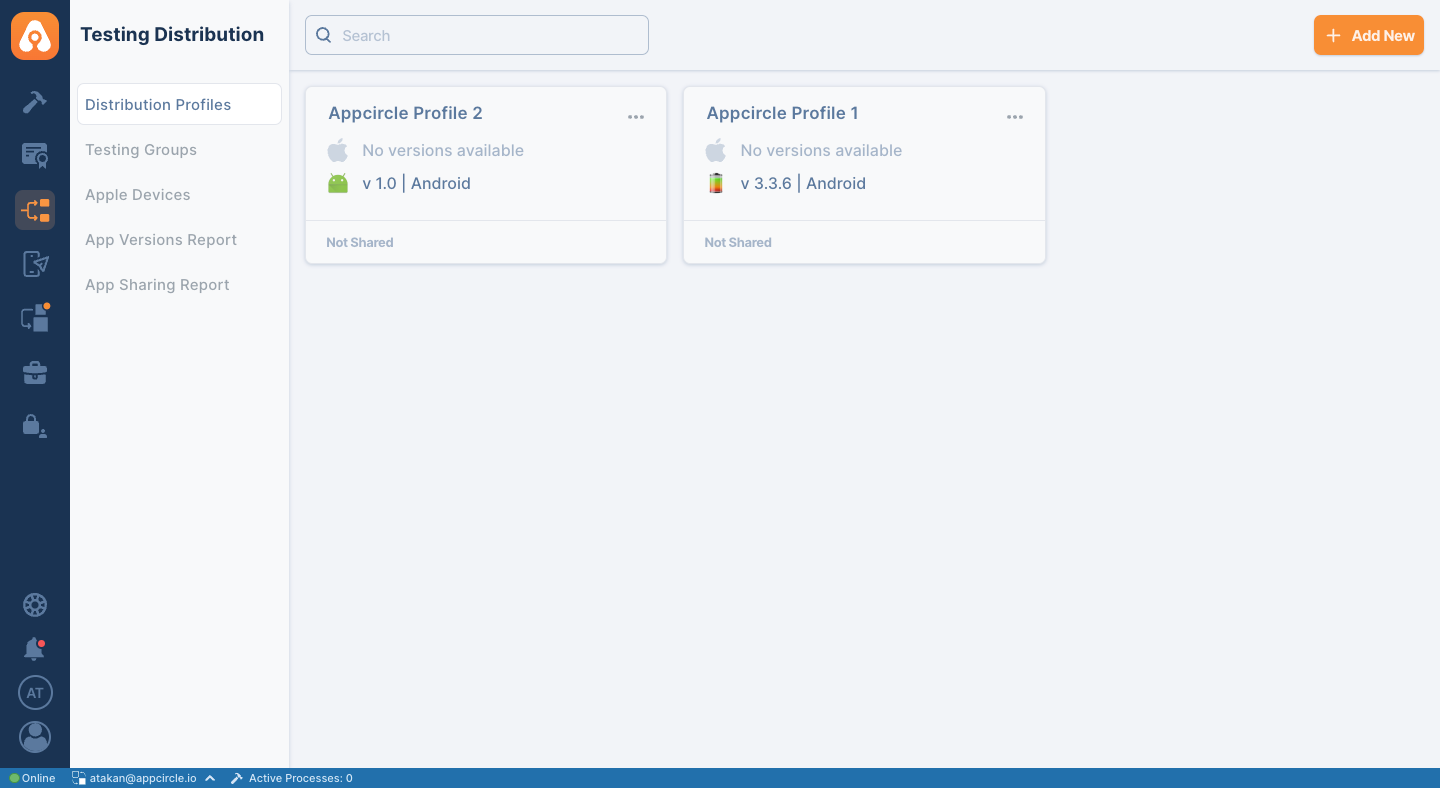
- Click on the
Settingsbutton on the detail screen
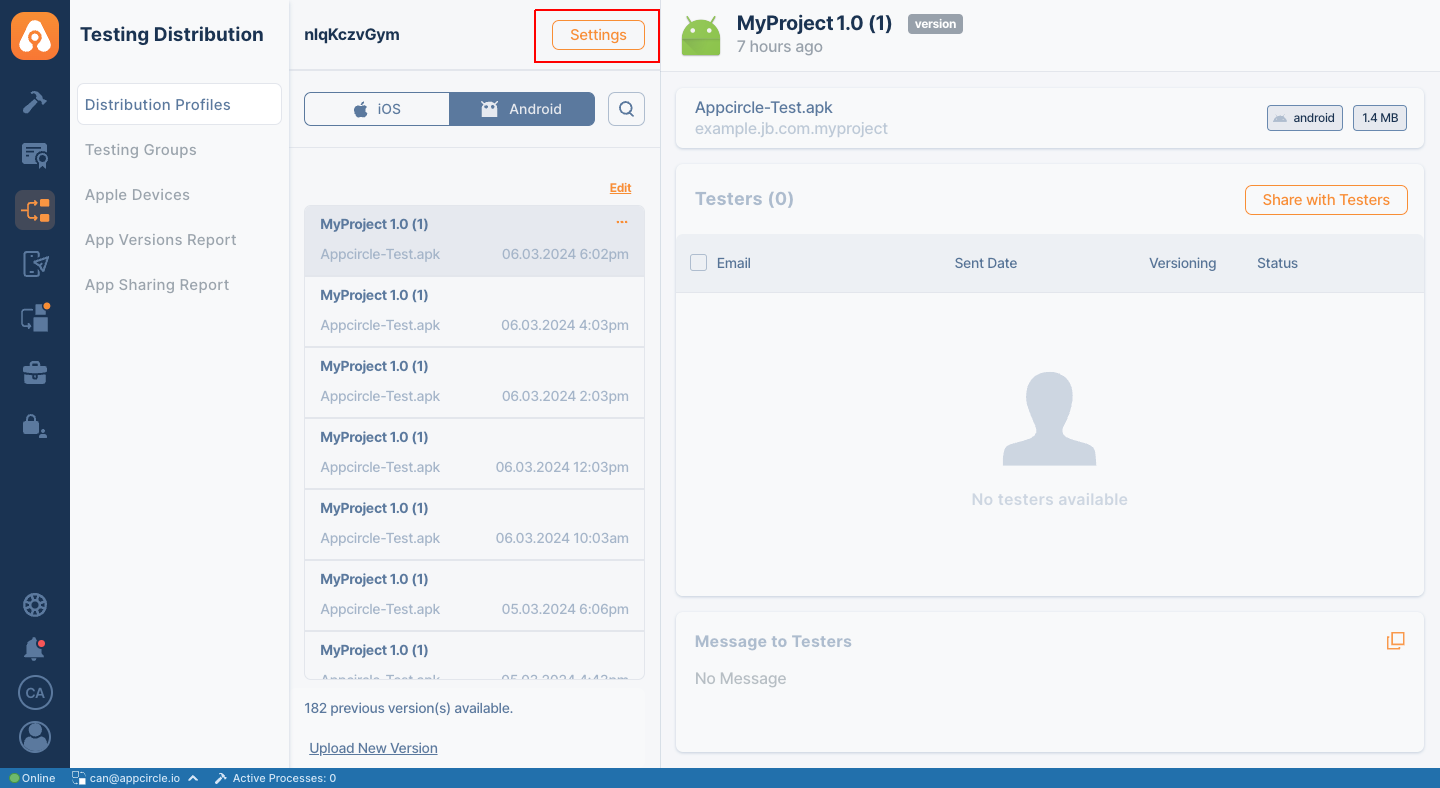
- Navigate to the
Authenticationtab and select SSO Login as the authentication type
